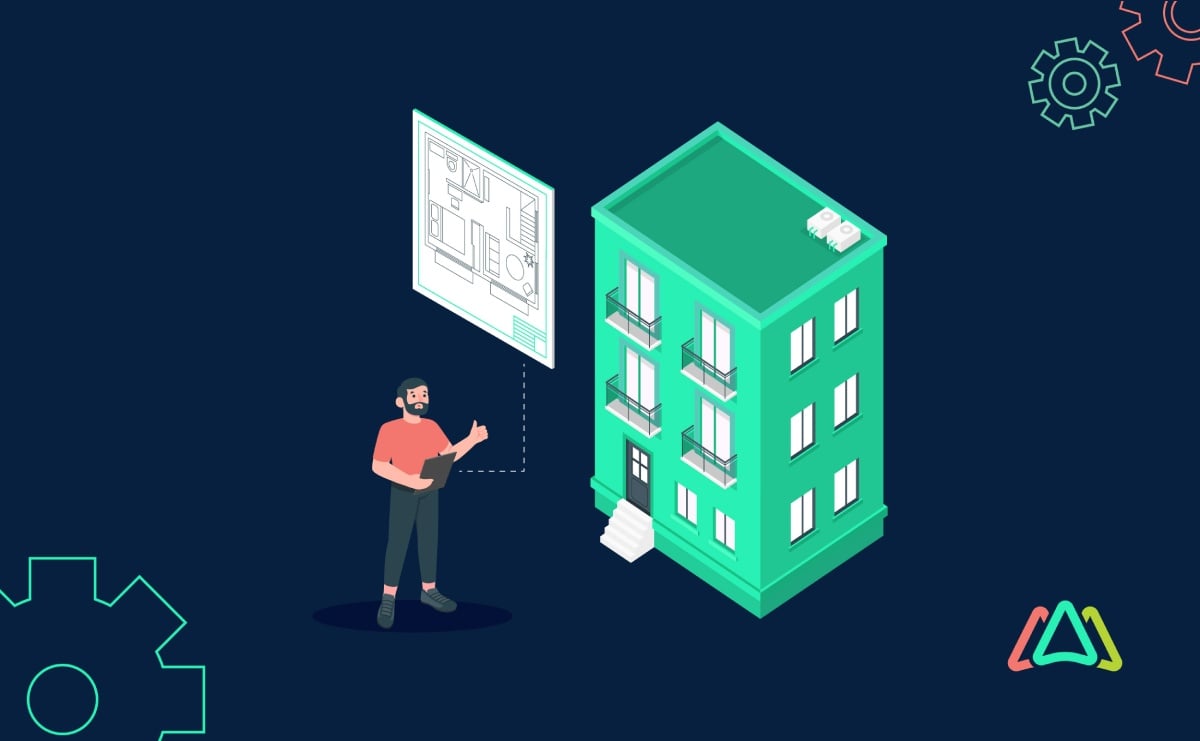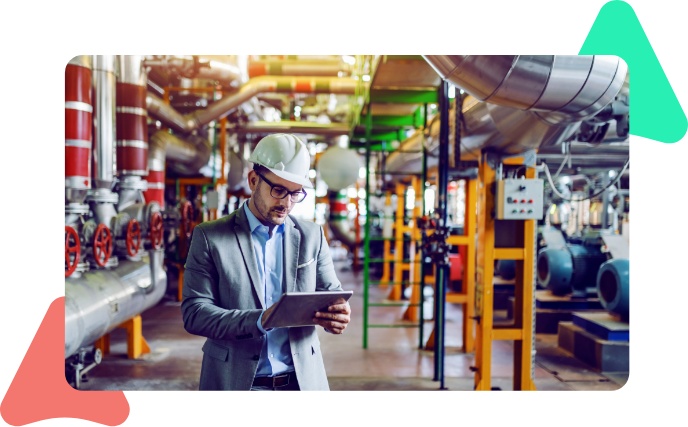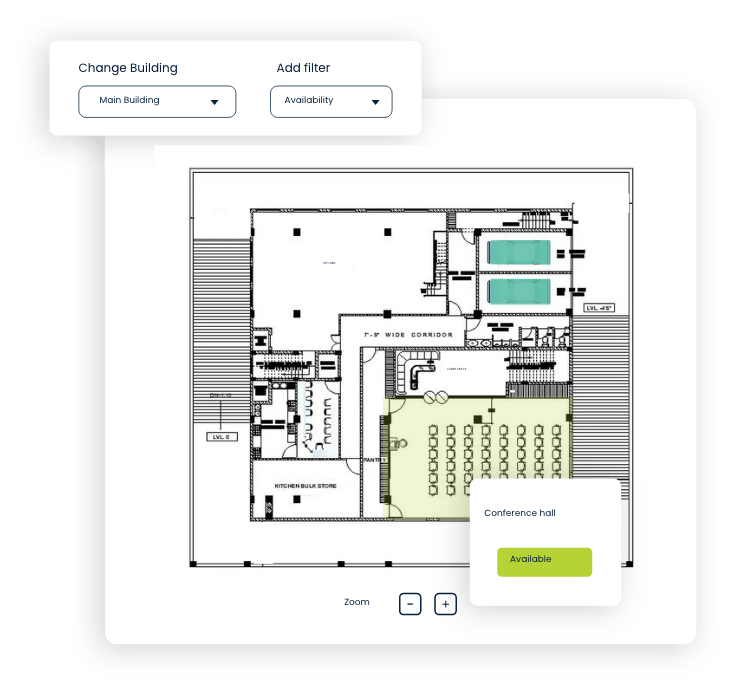
A Facility Manager's Playbook: Adapting to New Responsibilities in a Changing World
Facility management is a multifaceted discipline that includes activities to ensure the efficient and effective functioning of physical spaces. It involves coordinating people, processes, and technology to create and maintain a safe, productive, and sustainable environment within various facilities, such as office buildings, hospitals, educational institutions, and manufacturing plants.
Facilities represent a significant portion of an organization's assets and operating expenses. Effective facility management directly impacts an organization's bottom line, employee well-being, and overall productivity, making facility managers' role very important. Facility managers play a pivotal role in achieving an organization's strategic goals by optimizing space utilization, reducing operational costs, and ensuring compliance with safety and environmental standards. They are responsible for the day-to-day upkeep of physical spaces, ensuring they remain functional and safe. However, as organizations and their needs evolve, so does the role of facility managers.
Over time, facility managers have transitioned from merely "fixers" to strategic partners within organizations. Their responsibilities now include space planning, energy management, sustainability initiatives, and ensuring positive occupant experiences. This shift reflects the growing recognition of facilities as strategic assets rather than just places to work.
The Significance of Adapting to Change in the Facility Management Space
Numerous factors, including technological advancements, sustainability imperatives, changing workplace dynamics, and the ongoing impact of global events like the COVID-19 pandemic, have accelerated the pace of change. Facility managers must adapt to these shifts to remain relevant and effective in their roles.
Embracing change is not merely a requirement; it's an opportunity for facility managers to become proactive contributors to their organizations' success. Those who can anticipate and leverage emerging trends and technologies will be better positioned to address the challenges and opportunities that lie ahead.

The Traditional Role of Facility Managers
Focus on Maintenance and Operational Efficiency
Traditionally, the focus was on keeping the lights on, the HVAC systems running, and the premises safe for occupants. The emphasis on operational efficiency aimed to reduce costs and optimize resources. Facility managers were tasked with finding ways to prolong the lifespan of equipment, reduce energy consumption, and minimize downtime due to maintenance issues. While essential for ensuring business continuity, this approach was somewhat reactive, addressing issues as they arose.
Responsibilities and Duties of Facility Managers
In the not-so-distant past, facility managers were primarily tasked with the day-to-day responsibilities of keeping physical spaces operational. Their core duties revolved around maintaining the functionality, safety, and cleanliness of buildings and facilities. These roles included:
- Maintenance Management: Facility managers oversaw routine maintenance, repairs, and inspections to ensure that all systems, equipment, and infrastructure were in working order.
- Space Management: They allocated office spaces, managed floor plans, and tracked occupancy to optimize the use of available space.
- Budgeting and Cost Control: Facility managers were responsible for budgeting and controlling operational expenses, often focusing on cost reduction and efficiency.
- Safety and Compliance: Ensuring compliance with building codes, safety regulations, and environmental standards was a fundamental duty.
- Vendor and Contractor Management: They liaised with external vendors and contractors for facility-related services, such as janitorial work, landscaping, and repairs.
Limited Technology Integration and Sustainability Initiatives
In the traditional facility management paradigm, technological integration and sustainability initiatives were not high on the agenda. Facilities were managed with paper-based systems, spreadsheets, and manual processes. Energy consumption was monitored but often lacked advanced analytics and automation. Sustainability efforts were limited to compliance with basic environmental regulations.
The absence of robust technology integration meant facility managers had limited access to real-time data and insights. This made it challenging to make more accurate, data-driven decisions, predict equipment failures, and optimize space utilization effectively.

Drivers of Change in Facility Management
Several significant drivers of change have emerged in recent years, propelling facility management into a new era of innovation.
1. Technological Advancements and their Impact
1.1 IoT and Smart Building Technologies
The Internet of Things (IoT) has revolutionized the facility management landscape. IoT devices and sensors allow facility managers to collect real-time data on building performance, energy usage, and occupant behavior. This data enables predictive maintenance, energy optimization, and enhanced security. “Smart” building technologies also enable remote monitoring and control, offering greater flexibility and responsiveness.
1.2 Building Information Modeling (BIM)
Building Information Modeling (BIM) transforms how facility managers plan, design, construct, and operate facilities. BIM provides a digital representation of a building's physical and functional characteristics, offering a holistic view of the facility's lifecycle. Facility managers can leverage BIM to optimize space utilization, streamline maintenance, and make informed decisions about renovations or expansions.
2. Environmental Sustainability
2.1 Green Building Certifications (e.g., LEED)
Environmental sustainability has become a core driver of change in facility management. Green building certifications like LEED accreditation (Leadership in Energy and Environmental Design) incentivize sustainable construction and operation practices. Facility managers are increasingly tasked with implementing energy-efficient solutions, reducing water consumption, and minimizing waste to achieve these certifications.
2.2 Renewable Energy Integration
The transition to renewable energy sources, such as solar and wind power, is reshaping facility management strategies. Facility managers are exploring opportunities to integrate renewable energy solutions into their facilities to reduce carbon footprints and energy costs. This shift towards cleaner energy sources aligns with broader sustainability goals and regulatory pressures.
3. Changing Workplace Dynamics
3.1 Remote Work and Flexible Office Spaces
Facility managers must adapt to accommodate hybrid work models, which require versatile, technology-equipped spaces conducive to collaboration. This shift demands a reevaluation of office layouts and resource allocation.
3.2 Post-Pandemic Facility Management Challenges
The COVID-19 pandemic accelerated changes in facility management, emphasizing health and safety protocols. Facility managers now face the ongoing challenge of ensuring safe, hygienic, and adaptable spaces. This includes ventilation improvements, touchless technology integration, and crisis response planning. For example, social distancing quickly became a challenge that facility managers are looking to technology to help support and manage.
4. Increased Emphasis on Occupant Experience and Well-being
Facility managers are increasingly recognizing the significance of occupant experience and well-being. Happy, healthy occupants are more productive and engaged. To address this, facility managers are implementing wellness programs, ergonomic design, and amenities that enhance the quality of life for building occupants. Collecting feedback and leveraging data to improve the occupant experience has become a priority.
The Modern Facility Manager: Tackling Expanded Roles and Responsibilities with a CMMS
In response to the evolving landscape of facility management, modern facility managers are adopting an adaptive approach encompassing expanded roles and responsibilities. This adaptation allows them to meet the challenges of today's dynamic environment and deliver enhanced value to their organizations. Integrating a CMMS into the facility manager's toolkit empowers them to excel in their expanded roles and responsibilities. It enables data-driven decision-making, supports sustainability initiatives, facilitates collaboration across departments, and harnesses the power of data analytics for more efficient facility management.
1. Integration of Technology for Data-Driven Decision-Making
Role Expansion:
With the latest technology, today’s facility managers are no longer limited to reactive maintenance. They now proactively analyze data to predict equipment failures, reduce downtime, and optimize maintenance schedules.
CMMS Benefits:
CMMS systems act as data hubs, collecting real-time data from sensors and maintenance activities. This data is then analyzed to identify trends and anomalies, enabling predictive maintenance. Facility managers can access detailed equipment history and performance metrics through the CMMS and track facility management KPIs to make data-driven decisions.
2. Sustainability and Energy Management Initiatives
Role Expansion:
Modern facility managers are responsible for implementing sustainability initiatives, including energy efficiency measures and renewable energy integration, to reduce environmental impact and operational costs.
CMMS Benefits:
Some CMMS software provides visibility into energy consumption patterns and asset performance. CMMS can also help schedule maintenance activities to ensure that equipment operates at peak efficiency, reducing energy waste. Facility managers can also use a facility management software to track energy usage trends, identify energy-saving opportunities, and implement strategies to optimize energy consumption.
3. Collaboration with HR and IT Departments
Role Expansion:
Collaboration with HR and IT is necessary to create flexible and technology-integrated office spaces that enhance employee well-being and productivity.
CMMS Benefits:
CMMS supports collaboration by providing a centralized platform for tracking and maintaining workspace assets. It helps facility managers efficiently coordinate moves, adds, and changes (MACs). A CAFM on the other hand improves collaboration by providing a comprehensive view of workspace utilization data, helping HR or admin teams make informed decisions about space allocation and space layout to improve employee satisfaction.
4. Embracing Data Analytics and AI
Role Expansion:
Modern facility managers leverage data analytics and AI to implement predictive maintenance strategies and optimize space utilization.
CMMS Benefits:
CMMS includes built-in analytics and reporting tools. Facility managers can use these tools to perform in-depth analysis of maintenance data, identifying patterns that indicate potential equipment failures. AI algorithms integrated into CMMS can recommend maintenance schedules and resource allocation. Additionally, facility managers can leverage CAFM software to track space utilization data, making it easier to optimize office layouts and allocate space efficiently.

Challenges and Obstacles in the Evolving Role
1. Skills Gap and Workforce Development
Challenge:
The rapid evolution of facility management requires facility managers and their teams to acquire new skills and competencies. Bridging the skills gap can be daunting, especially for those traditionally focused on maintenance and operational tasks.
Overcoming the Challenge:
- Continuous Learning: Encourage facility managers and staff to engage in continuous learning and professional development programs. Offer training on emerging technologies, sustainability practices, and data analytics. Participate in industry conferences where experts and service providers discuss the latest trends, best practices, and solutions.
- Mentorship Programs: Establish mentorship programs within your organization, allowing experienced facility managers to guide and mentor newcomers, sharing their knowledge and expertise.
- Certifications: Encourage your team to attend webinars and pursue relevant certifications and credentials in sustainability, data analytics, and cybersecurity to stay current with industry trends.
2. Budget Constraints and ROI Considerations
Challenge:
Implementing modern facility management practices often involves upfront costs for technology adoption, sustainability initiatives, and employee well-being programs. Demonstrating the return on investment (ROI) can be challenging.
Overcoming the Challenge:
- Comprehensive Cost-benefit Analysis: Conduct a thorough cost-benefit analysis for proposed initiatives, including both short-term and long-term benefits. Clearly articulate how these investments will contribute to cost savings, energy efficiency, or improved occupant satisfaction.
- Benchmarking: Compare your facility's performance and costs with industry benchmarks to identify areas where improvements can yield significant ROI.
- Advocacy and Communication: Effectively communicate the value of proposed initiatives to key stakeholders, including senior management and finance teams. Make a compelling case for how these investments align with organizational goals and contribute to the bottom line.
3. Security and Data Privacy Concerns
Challenge:
Embracing technology and data-driven decision-making introduces security and data privacy challenges. Facility managers must ensure that sensitive data and systems are protected from cyber threats.
Overcoming the Challenge:
- Cybersecurity Measures: Invest in robust cybersecurity measures, including firewalls, encryption, and regular security audits, to safeguard data and systems.
- Data Privacy Policies: Develop and enforce privacy policies that dictate how data is collected, stored, and shared. Ensure compliance with applicable data protection regulations.
- Employee Training: Train facility management staff on cybersecurity best practices and the importance of data protection. Ensure that facility management employees go through regular security awareness training.
4. Regulatory Compliance and Standards
Challenge:
Keeping up with evolving regulations and standards, including those related to sustainability, health, and safety, can be complex and time-consuming.
Overcoming the Challenge:
- Regular Audits and Assessments: Conduct regular audits and assessments to ensure compliance with applicable regulations and standards. Use technology, such as CMMS, to track compliance requirements and deadlines. A CMMS also maintains a detailed audit trail that provides excellent documentation of facility maintenance activities for internal and external 3rd party audits.
- Engage Experts: Collaborate with legal and regulatory experts who specialize in facility management to stay informed about changing regulations and ensure compliance.
- Industry Associations: Join industry associations like IFMA and networks that provide updates on regulatory changes and best practices. Participate in industry events and conferences to stay informed and network with peers.
The Roadmap to Success: Adaptation Strategies for Facility Managers
1. Continuous Learning and Professional Development
- Embrace Lifelong Learning: Facility management is a knowledge-intensive field. Stay curious and commit to continuous learning. Attend workshops, conferences, and webinars to keep up with industry trends and emerging technologies.
- Pursue Certifications: Consider obtaining relevant certifications in areas such as sustainable facility management, project management, or data analytics. These credentials can enhance your expertise and credibility.
- Mentorship and Networking: Build a network of peers and mentors within the facility management community. Exchange insights and experiences to gain a broader perspective on industry challenges and solutions.
2. Collaboration with Cross-Functional Teams
- Break Down Silos: Foster a culture of collaboration by breaking down silos between departments. Work closely with HR, IT, finance, and other teams to align facility management goals with organizational objectives.
- Participate in Multidisciplinary Projects: Collaborate on multidisciplinary projects that require input from various departments. This enhances communication, streamlines processes, and ensures facility management initiatives align with broader business strategies.
- Effective Communication: Communicate the impact of facility management decisions to other teams. Use data and analytics to demonstrate how changes in facility management practices can benefit the entire organization.
3. Leveraging Data for Informed Decision-Making
- Data Collection and Analysis: Invest in data collection tools and systems, such as CMMS and IoT sensors, to gather accurate and real-time data on facility performance, energy usage, and occupant behavior.
- Data-Driven Insights: Analyze data to gain insights into facility operations. Use data to identify trends, anticipate maintenance needs, optimize energy consumption, and enhance occupant experience.
- Predictive Analytics: Implement predictive analytics models to forecast equipment failures and maintenance requirements. This proactive approach minimizes downtime and reduces operational costs.
4. Sustainability and ESG Integration
- Define Sustainability Goals: Establish clear sustainability goals and objectives for your facilities. Ensure alignment with global Environmental, Social, and Governance (ESG) standards.
- Energy Efficiency Initiatives: Implement energy-efficient technologies and practices to reduce energy consumption and lower carbon emissions. Explore renewable energy sources to reduce your facility's environmental impact further.
- Environmental Reporting: Develop robust environmental reporting mechanisms to track and communicate your sustainability progress to stakeholders, including investors, clients, and employees.
5. Building a Resilient and Agile Facility Management Team
- Diverse Skill Sets: Assemble a team with diverse skills and expertise, including technical knowledge, project management, sustainability, and communication abilities.
- Adaptive Leadership: Cultivate adaptive leadership within your team, promoting flexibility and resilience in the face of change. Encourage team members to embrace new technologies and methodologies.
- Professional Development: Invest in your team's professional development by providing training opportunities, mentorship programs, and access to resources that enable them to adapt and thrive.
In this era of constant change and innovation, facility management is not just about maintaining buildings; it's about creating environments that foster growth, well-being, and sustainability. The modern facility manager is not just a manager but a strategic partner, a guardian of resources, and a driver of positive change.
Today's facility managers are no longer confined to traditional roles; they are visionaries, adaptors, and innovators, steering organizations toward operational excellence and sustainability.
The expanded roles and responsibilities of modern facility managers encompass technology integration, sustainability initiatives, collaboration across departments, data-driven decision-making, and the cultivation of agile, resilient teams. These adaptations are not merely responses to change; they are proactive strategies that position facility managers as leaders in the dynamic landscape of facility management.
TABLE OF CONTENTS
Keep Reading
Ever find yourself checking into a luxury hotel and expecting a relaxing stay, only to find a ...
11 Apr 2025
Organizations are witnessing swift changes in the business environment and confronting a ...
8 Apr 2025
Last month, news outlets and the entire internet was abuzz with the return of NASA astronauts ...
3 Apr 2025
What comes first - CMMS or predictive maintenance? If your answer is either, it is correct. ...
28 Mar 2025
Artificial intelligence (AI) talk has become commonplace. Today, engaging in business-focused ...
27 Mar 2025
Imagine a world where machines predict, diagnose, and fix their issues before they fail. This ...
25 Mar 2025
A facility maintenance plan is at the core of a facility’s operations. This organized ...
21 Mar 2025
Think of managing your maintenance operations like managing a championship sports team. Just ...
21 Mar 2025
The maintenance sector is battling a severe talent shortage that threatens to undermine ...
7 Mar 2025
Manufacturing maintenance is the backbone of industrial efficiency, ensuring machines run ...
5 Mar 2025
No one likes playing a guessing game when equipment breaks down. Yet, maintenance teams often ...
4 Mar 2025
The size of the preventive maintenance software market is discussed in millions of dollars, ...
4 Mar 2025
The organizational structure and corporate hierarchy vary from company to company. Large ...
28 Feb 2025
Maintenance procedures are essential for ensuring the longevity and reliability of machinery ...
21 Feb 2025
Sustainability is no longer just a buzzword; it's a critical component of corporate social ...
20 Feb 2025
A Computerized Maintenance Management System (CMMS) relies on accurate, well-organized data ...
18 Feb 2025
In an era where technology drives operational efficiency, Computerized Maintenance Management ...
14 Feb 2025
A Computerized Maintenance Management System (CMMS) is a key component of modern maintenance ...
13 Feb 2025
Introduction Maintenance management is the foundation of maintenance operations in industries ...
11 Feb 2025
Introduction A Computerized Maintenance Management System (CMMS) is software designed to help ...
7 Feb 2025





